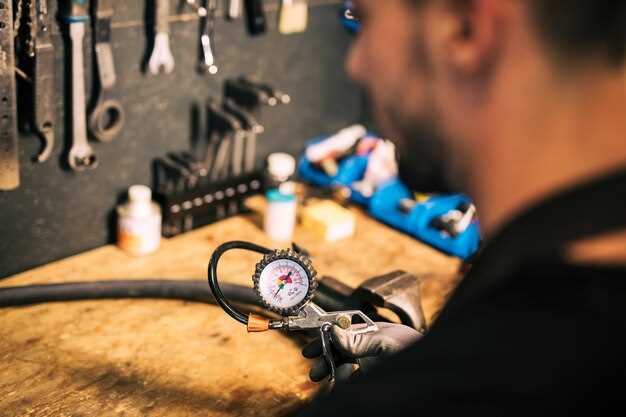
Choosing the right air compressor is a crucial decision for any shop owner or contractor. The tools you use can significantly impact your efficiency and productivity, and the compressor plays a central role in this equation. Understanding the specific requirements of your tasks and the tools you plan to operate is essential for making an informed choice.
When selecting an air compressor, it is important to consider various factors, including the type of tools you will be using, the required PSI and CFM ratings, and the compressor’s tank size. These elements can affect not only the performance of your compressor but also the overall functionality of your workshop. Ensuring that your compressor meets the demands of your tools will lead to smoother operations and reduce the risk of equipment failure.
Additionally, understanding the differences between portable and stationary compressors, as well as the benefits of oil-lubricated versus oil-free models, will aid in your decision-making process. By evaluating these variables, you can select a compressor that not only meets your immediate needs but also supports the growth and demands of your projects in the long run.
Determine Required CFM and PSI for Your Air Tools

To select the best air compressor for your shop, it is essential to determine the required CFM (Cubic Feet per Minute) and PSI (Pounds per Square Inch) for your specific air tools. Each tool has its own requirements, and understanding these will help you choose a compressor that can operate effectively and efficiently.
Start by checking the specifications of each air tool you plan to use. Most manufacturers provide the necessary CFM and PSI ratings. CFM is a measure of the volume of air the tool consumes at a specific pressure, while PSI indicates the air pressure needed to operate the tool effectively. It’s crucial to ensure that your selected compressor can meet or exceed these requirements to maintain optimal performance.
In general, pneumatic tools such as sanders, impact wrenches, and spray guns will have different CFM and PSI needs. For instance, a typical air impact wrench may require around 4 CFM at 90 PSI, while a spray gun may need approximately 10 CFM at 30 PSI. Always consider the worst-case scenario, that is, the tool that demands the highest CFM and PSI when determining your compressor’s size.
Additionally, if you use multiple tools simultaneously, calculate the total CFM requirement by adding the CFM ratings of all tools in use. This ensures that your air compressor can handle the combined demand without causing fluctuations in performance. Furthermore, it’s beneficial to choose a compressor that can provide a bit of extra CFM to accommodate variations in tool usage and prevent the compressor from overworking.
In summary, accurately determining the required CFM and PSI for your air tools is a fundamental step in selecting the right air compressor for your shop. Consider both the specific requirements of your tools and the overall air demand to ensure adequate performance and longevity of your equipment.
Evaluate Tank Size Options for Continuous Use
When selecting an air compressor for your shop, one of the most critical factors to consider is the tank size. The tank plays a significant role in how efficiently the compressor operates, particularly during continuous use. The right tank size ensures that your tools receive a steady stream of compressed air, preventing fluctuations that can lead to inefficiency or interrupted workflows.
Small Tank Size: Compressors with smaller tanks, typically ranging from 2 to 6 gallons, are ideal for light-duty tasks and portable applications. They can provide quick bursts of air for tasks such as inflating tires or powering small pneumatic tools. However, they may struggle to maintain consistent pressure during prolonged use, requiring frequent cycling that can lead to wear on the compressor.
Medium Tank Size: For most shop applications, a medium-sized tank, around 6 to 20 gallons, strikes a balance between portability and performance. This size is suitable for intermittent use, allowing you to run multiple tools without significant downtime. It generates enough air to power tools like nail guns or impact wrenches effectively, making it a favorite among contractors and DIY enthusiasts.
Large Tank Size: If your operations demand continuous air supply for larger tools like spray guns or sanders, consider a compressor with a tank size of 30 gallons or more. Larger tanks can sustain longer run times without cycling, meaning that your tools will have a consistent air supply. This reduces the risk of overheating and prolongs the lifespan of your compressor.
While selecting the right tank size, also factor in the air delivery rate, measured in cubic feet per minute (CFM). Ensuring that the CFM of your compressor meets or exceeds the requirements of your tools is crucial for optimal performance.
In summary, evaluating tank size options is essential for ensuring efficient continuous use of your air compressor. Assess your specific needs and the tools you intend to use, and choose a tank size that maintains air pressure without unnecessary cycling.
Compare Oil-Lubricated vs. Oil-Free Compressors

When selecting an air compressor for your shop, one crucial decision is whether to choose an oil-lubricated or an oil-free model. Each type has its distinct advantages and disadvantages based on specific applications and requirements.
Oil-lubricated compressors typically offer better performance due to reduced friction between moving parts, leading to higher efficiency and prolonged life. These compressors are excellent for heavy-duty tools and tasks that require continuous usage. They often run cooler, making them ideal for applications that demand extensive operation, such as spray painting or sandblasting.
However, oil-lubricated models require regular maintenance, including oil changes and monitoring of oil levels. This can increase the overall cost of ownership and demands more attention to ensure optimal performance. Additionally, they can be messier due to oil leaks, which may not be suitable for all work environments.
On the other hand, oil-free compressors are designed for minimal maintenance, making them a convenient choice for both hobbyists and professional users. They are ideal for lighter tasks and smaller tools, including inflating tires, powering airbrushes, and light pneumatic tools. Oil-free compressors eliminate the risk of oil contamination in applications such as painting, where purity is essential.
However, oil-free models often have a shorter lifespan and may generate more heat due to increased friction, potentially limiting their effectiveness for more demanding tasks. Users of high-demand tools may find that oil-free compressors struggle to keep up with their requirements.
In conclusion, the choice between oil-lubricated and oil-free compressors depends on your specific needs and the type of tools you plan to use. Consider the frequency of use, maintenance willingness, and application requirements before making a decision. Each option has its place in a shop, so understanding their differences is crucial in selecting the best compressor for your tools.




